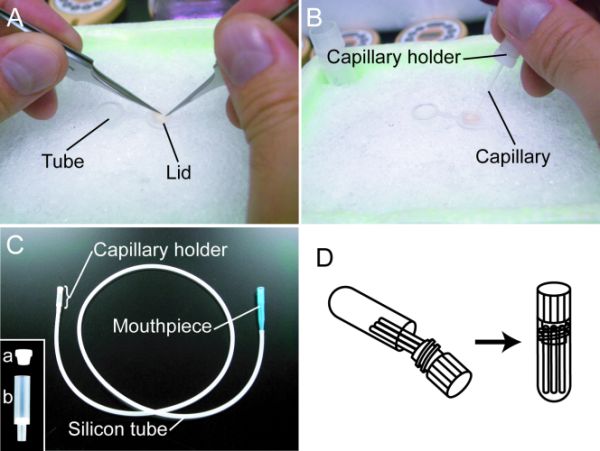
> Large size
|
Figure 4-4. (A) Preparation of sperm suspension. A testis in the freezing medium is minced using two pairs of sharp forceps in a lid of a 0.5-mL tube on ice. (B) The sperm suspension is drawn into a glass capillary attached to a capillary holder of a mouth pipette. (C) A mouth pipette consists of three parts: capillary holder, silicon tubing, and mouthpiece. The capillary holder (inlet) is assembled from a silicon tip (a) and a connector (b). Silicon tips (a) are available from Drummond Scientific Company (Silicone tips, #1-000-9003). Silicon tips attached to capillary dispensers (Figure 4-6E) can also be used. Incubation columns for automated whole-mount in situ hybridization (InsituPro, Intavis Bioanalytical Instruments AG, Cologne, Germany) are used as the connectors (b, Small incubation column, #10.340, Intavis). The tapered part of a disposable 1-mL tip for a Pipetman is also useful as a connector. Long silicon tubing (1 m long, inner diameter 3 mm, thickness 1 mm) is convenient as it can be draped around the neck while working. Disposable 1-mL tips can also be used as the mouthpiece. Ready-made mouth pipettes are also convenient (e.g., 15" Aspirator tube assembly, #2-000-000, Drummond). (D) To avoid breaking capillaries with the internal thread while tightening the cap of the cryotube, the following steps should be taken. First, orient the cryotube in a slanted position with the opening downward, to let the capillary tubes slide into the concavity of the cap (left). Lightly fasten the cap and return the tube to an upright position. In this way, the capillaries are held in position inside the cap (right). |